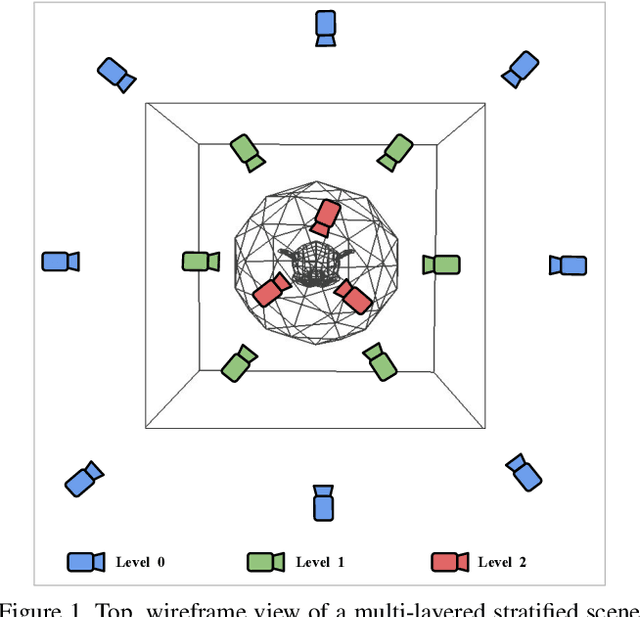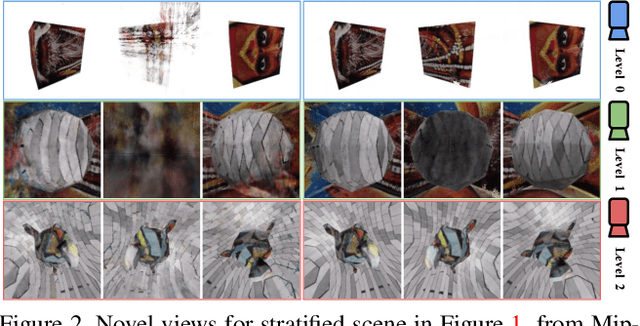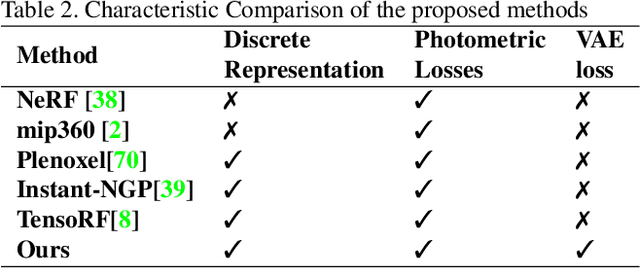Ankit Dhiman
MirrorVerse: Pushing Diffusion Models to Realistically Reflect the World
Apr 21, 2025Abstract:Diffusion models have become central to various image editing tasks, yet they often fail to fully adhere to physical laws, particularly with effects like shadows, reflections, and occlusions. In this work, we address the challenge of generating photorealistic mirror reflections using diffusion-based generative models. Despite extensive training data, existing diffusion models frequently overlook the nuanced details crucial to authentic mirror reflections. Recent approaches have attempted to resolve this by creating synhetic datasets and framing reflection generation as an inpainting task; however, they struggle to generalize across different object orientations and positions relative to the mirror. Our method overcomes these limitations by introducing key augmentations into the synthetic data pipeline: (1) random object positioning, (2) randomized rotations, and (3) grounding of objects, significantly enhancing generalization across poses and placements. To further address spatial relationships and occlusions in scenes with multiple objects, we implement a strategy to pair objects during dataset generation, resulting in a dataset robust enough to handle these complex scenarios. Achieving generalization to real-world scenes remains a challenge, so we introduce a three-stage training curriculum to develop the MirrorFusion 2.0 model to improve real-world performance. We provide extensive qualitative and quantitative evaluations to support our approach. The project page is available at: https://mirror-verse.github.io/.
Instructive3D: Editing Large Reconstruction Models with Text Instructions
Jan 08, 2025



Abstract:Transformer based methods have enabled users to create, modify, and comprehend text and image data. Recently proposed Large Reconstruction Models (LRMs) further extend this by providing the ability to generate high-quality 3D models with the help of a single object image. These models, however, lack the ability to manipulate or edit the finer details, such as adding standard design patterns or changing the color and reflectance of the generated objects, thus lacking fine-grained control that may be very helpful in domains such as augmented reality, animation and gaming. Naively training LRMs for this purpose would require generating precisely edited images and 3D object pairs, which is computationally expensive. In this paper, we propose Instructive3D, a novel LRM based model that integrates generation and fine-grained editing, through user text prompts, of 3D objects into a single model. We accomplish this by adding an adapter that performs a diffusion process conditioned on a text prompt specifying edits in the triplane latent space representation of 3D object models. Our method does not require the generation of edited 3D objects. Additionally, Instructive3D allows us to perform geometrically consistent modifications, as the edits done through user-defined text prompts are applied to the triplane latent representation thus enhancing the versatility and precision of 3D objects generated. We compare the objects generated by Instructive3D and a baseline that first generates the 3D object meshes using a standard LRM model and then edits these 3D objects using text prompts when images are provided from the Objaverse LVIS dataset. We find that Instructive3D produces qualitatively superior 3D objects with the properties specified by the edit prompts.
Turbo-GS: Accelerating 3D Gaussian Fitting for High-Quality Radiance Fields
Dec 18, 2024



Abstract:Novel-view synthesis is an important problem in computer vision with applications in 3D reconstruction, mixed reality, and robotics. Recent methods like 3D Gaussian Splatting (3DGS) have become the preferred method for this task, providing high-quality novel views in real time. However, the training time of a 3DGS model is slow, often taking 30 minutes for a scene with 200 views. In contrast, our goal is to reduce the optimization time by training for fewer steps while maintaining high rendering quality. Specifically, we combine the guidance from both the position error and the appearance error to achieve a more effective densification. To balance the rate between adding new Gaussians and fitting old Gaussians, we develop a convergence-aware budget control mechanism. Moreover, to make the densification process more reliable, we selectively add new Gaussians from mostly visited regions. With these designs, we reduce the Gaussian optimization steps to one-third of the previous approach while achieving a comparable or even better novel view rendering quality. To further facilitate the rapid fitting of 4K resolution images, we introduce a dilation-based rendering technique. Our method, Turbo-GS, speeds up optimization for typical scenes and scales well to high-resolution (4K) scenarios on standard datasets. Through extensive experiments, we show that our method is significantly faster in optimization than other methods while retaining quality. Project page: https://ivl.cs.brown.edu/research/turbo-gs.
CoRF : Colorizing Radiance Fields using Knowledge Distillation
Sep 14, 2023



Abstract:Neural radiance field (NeRF) based methods enable high-quality novel-view synthesis for multi-view images. This work presents a method for synthesizing colorized novel views from input grey-scale multi-view images. When we apply image or video-based colorization methods on the generated grey-scale novel views, we observe artifacts due to inconsistency across views. Training a radiance field network on the colorized grey-scale image sequence also does not solve the 3D consistency issue. We propose a distillation based method to transfer color knowledge from the colorization networks trained on natural images to the radiance field network. Specifically, our method uses the radiance field network as a 3D representation and transfers knowledge from existing 2D colorization methods. The experimental results demonstrate that the proposed method produces superior colorized novel views for indoor and outdoor scenes while maintaining cross-view consistency than baselines. Further, we show the efficacy of our method on applications like colorization of radiance field network trained from 1.) Infra-Red (IR) multi-view images and 2.) Old grey-scale multi-view image sequences.
Strata-NeRF : Neural Radiance Fields for Stratified Scenes
Aug 20, 2023



Abstract:Neural Radiance Field (NeRF) approaches learn the underlying 3D representation of a scene and generate photo-realistic novel views with high fidelity. However, most proposed settings concentrate on modelling a single object or a single level of a scene. However, in the real world, we may capture a scene at multiple levels, resulting in a layered capture. For example, tourists usually capture a monument's exterior structure before capturing the inner structure. Modelling such scenes in 3D with seamless switching between levels can drastically improve immersive experiences. However, most existing techniques struggle in modelling such scenes. We propose Strata-NeRF, a single neural radiance field that implicitly captures a scene with multiple levels. Strata-NeRF achieves this by conditioning the NeRFs on Vector Quantized (VQ) latent representations which allow sudden changes in scene structure. We evaluate the effectiveness of our approach in multi-layered synthetic dataset comprising diverse scenes and then further validate its generalization on the real-world RealEstate10K dataset. We find that Strata-NeRF effectively captures stratified scenes, minimizes artifacts, and synthesizes high-fidelity views compared to existing approaches.
Everything is There in Latent Space: Attribute Editing and Attribute Style Manipulation by StyleGAN Latent Space Exploration
Jul 20, 2022



Abstract:Unconstrained Image generation with high realism is now possible using recent Generative Adversarial Networks (GANs). However, it is quite challenging to generate images with a given set of attributes. Recent methods use style-based GAN models to perform image editing by leveraging the semantic hierarchy present in the layers of the generator. We present Few-shot Latent-based Attribute Manipulation and Editing (FLAME), a simple yet effective framework to perform highly controlled image editing by latent space manipulation. Specifically, we estimate linear directions in the latent space (of a pre-trained StyleGAN) that controls semantic attributes in the generated image. In contrast to previous methods that either rely on large-scale attribute labeled datasets or attribute classifiers, FLAME uses minimal supervision of a few curated image pairs to estimate disentangled edit directions. FLAME can perform both individual and sequential edits with high precision on a diverse set of images while preserving identity. Further, we propose a novel task of Attribute Style Manipulation to generate diverse styles for attributes such as eyeglass and hair. We first encode a set of synthetic images of the same identity but having different attribute styles in the latent space to estimate an attribute style manifold. Sampling a new latent from this manifold will result in a new attribute style in the generated image. We propose a novel sampling method to sample latent from the manifold, enabling us to generate a diverse set of attribute styles beyond the styles present in the training set. FLAME can generate diverse attribute styles in a disentangled manner. We illustrate the superior performance of FLAME against previous image editing methods by extensive qualitative and quantitative comparisons. FLAME also generalizes well on multiple datasets such as cars and churches.
 Add to Chrome
Add to Chrome Add to Firefox
Add to Firefox Add to Edge
Add to Edge